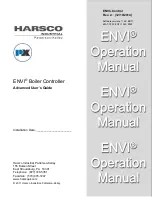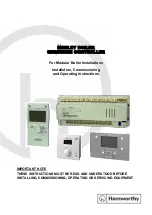MPC563XM Reference Manual, Rev. 1
Freescale Semiconductor
563
Preliminary—Subject to Change Without Notice
Table 17-7. SYNSR Field Descriptions
Field
Description
0–21
Reserved, should be cleared.
22
LOLF
Loss-of-lock flag. This bit provides the interrupt request flag for the loss-of-lock. To clear the flag, software must write
a 1 to the bit. Writing 0 has no effect. This flag bit is sticky in the sense that if lock is reacquired, the bit will remain
set until cleared by either writing 1 or asserting reset. It will not be asserted when lock is lost due to system reset,
write to the SYNCR in legacy mode which modifies the PREDIV or MFD fields, or write to ESYNCR1 in enhanced
mode which modifies the EMODE, EPREDIV, EMFD or CLKCFG[1:0] fields. Furthermore, it is not asserted if the
loss-of-lock condition was detected while the FMPLL is in bypass mode. Nevertheless, going from normal to bypass
will not automatically clear the flag if it was asserted while the FMPLL was in normal mode. See
.
0 No loss of lock detected. Interrupt service not requested.
1 Loss of lock detected. Interrupt service requested.
23
LOC
Loss-of-clock. This bit is an indication of whether a loss-of-clock condition is present. If LOC=0, the system clocks
are operating normally. If LOC=1, the system clocks have failed due to a reference or VCO failure. If a loss-of-clock
condition occurs which sets this bit and the clocks later return to normal, this bit will be cleared. A loss-of-clock
condition can only be detected if LOCEN=1. Furthermore, the LOC bit is not asserted when the FMPLL is in bypass
mode (because, in bypass, the VCO clock is not monitored and a loss-of-clock on the reference clock causes reset).
See
Section 17.5.4, “Loss-of-Clock Detection
.
0 No loss-of-clock detected. Clocks are operating normally.
1 Loss-of-clock detected. Clocks are not operating normally.
24
MODE
Mode of operation. This bit indicates whether the FMPLL is working in bypass mode or normal mode. The reset value
indicates bypass mode. In legacy mode (bit EMODE negated in the ESYNCR1 register), the MODE bit will change
to normal mode at the first time the SYNCR register is written. In enhanced mode (bit EMODE asserted in the
ESYNCR1 register), the MODE bit reflects the value of the CLKCFG[0] bit of the ESYNCR1 register.
0 Bypass mode.
1 Normal mode.
25
PLLSEL
Mode select. In previous MCUs of the MPC5500 family, this bit was used to differentiate between dual controller
mode and normal mode (negated in bypass or dual controller mode, asserted in normal mode). Dual controller mode
is not supported, therefore in legacy mode this bit resets to zero (bypass), but changes to one (normal mode) at the
first time the SYNCR register is written. In enhanced mode, the MODE bit reflects the value of the CLKCFG[1] bit of
the ESYNCR1 register.
0 Legacy mode: bypass or dual controller; enhanced mode: PLL off.
1 Legacy mode: normal; enhanced mode: PLL on.
26
PLLREF
FMPLL reference source. This bit indicates whether the FMPLL reference is from a crystal oscillator or from an
external clock generator. The reset value is determined by the state of the PLLREF pin. In legacy mode, the reset
value captured from the PLLREF pin cannot be changed anymore after reset. In enhanced mode, the PLLREF bit
reflects the value of the CLKCFG[2] bit of the ESYNCR1 register.
0 External clock reference.
1 Crystal oscillator reference.


















